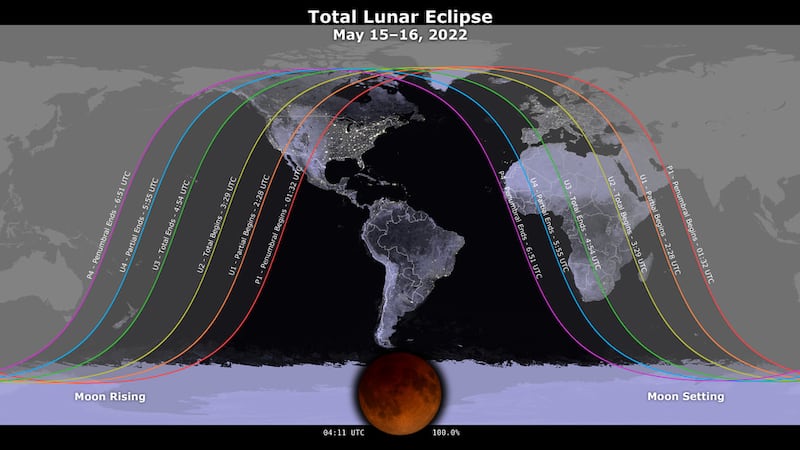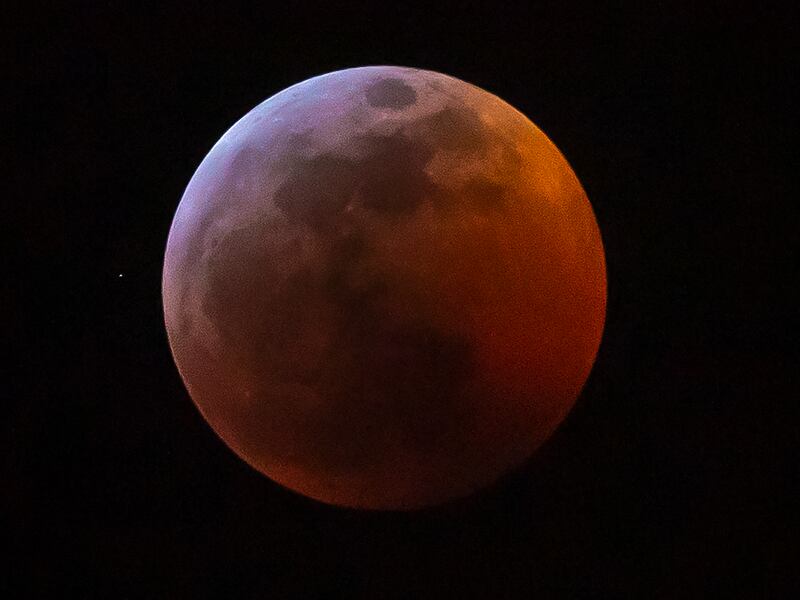The first total lunar eclipse in a year will happen this Sunday night. Not only is it the first eclipse of 2022, it will also be a “super flower blood moon,” Space.com reports.
What is a super flower blood moon?
This Sunday is a “super moon,” which is when the “moon is at or near its closest point to Earth at the same time as it is full,” according to NASA. This makes the moon seem bigger and brighter than usual.
“Flower moon” refers to May’s full moon, getting its name from the flowers of spring.
The term “blood moon,” on the other hand, refers to a total lunar eclipse because of the “reddish glow” that occurs when “the Earth is positioned directly between the moon and the sun,” according to CBS News.
Combine all of those together and you get a “super flower blood moon.”
Where can you see the blood moon?
The total lunar eclipse will be visible in “the Americas, Europe, Africa, the Middle East, the eastern Pacific and the South Pacific as far west as New Zealand,” according to Space.com.

What time is the total lunar eclipse?
According to NASA, the total lunar eclipse will begin at 7:32 p.m. MT on Sunday, May 15, and will end at 12:50 a.m. on Monday, May 16.
Totality — when the moon is completely in the Earth’s shadow — will occur at 9:29 p.m. MT, and will end at 10:53 p.m. MT.
Is it safe to look at a lunar eclipse?
Lunar eclipses are safe to view with the “naked eye,” unlike solar eclipses which require “special glasses in order to prevent eye damage,” according to CBS.
For better views of the phenomenon, you can use a telescope or camera.
How to watch the blood moon
If the eclipse won’t be visible where you are, or if the sky is too cloudy, you can watch a livestream.
NASA’s YouTube channel will be live with the total lunar eclipse.


